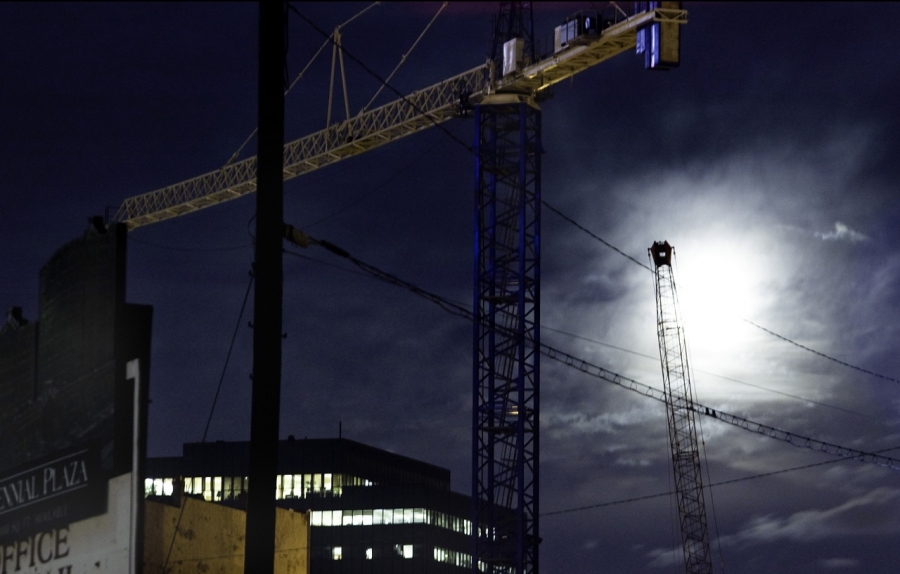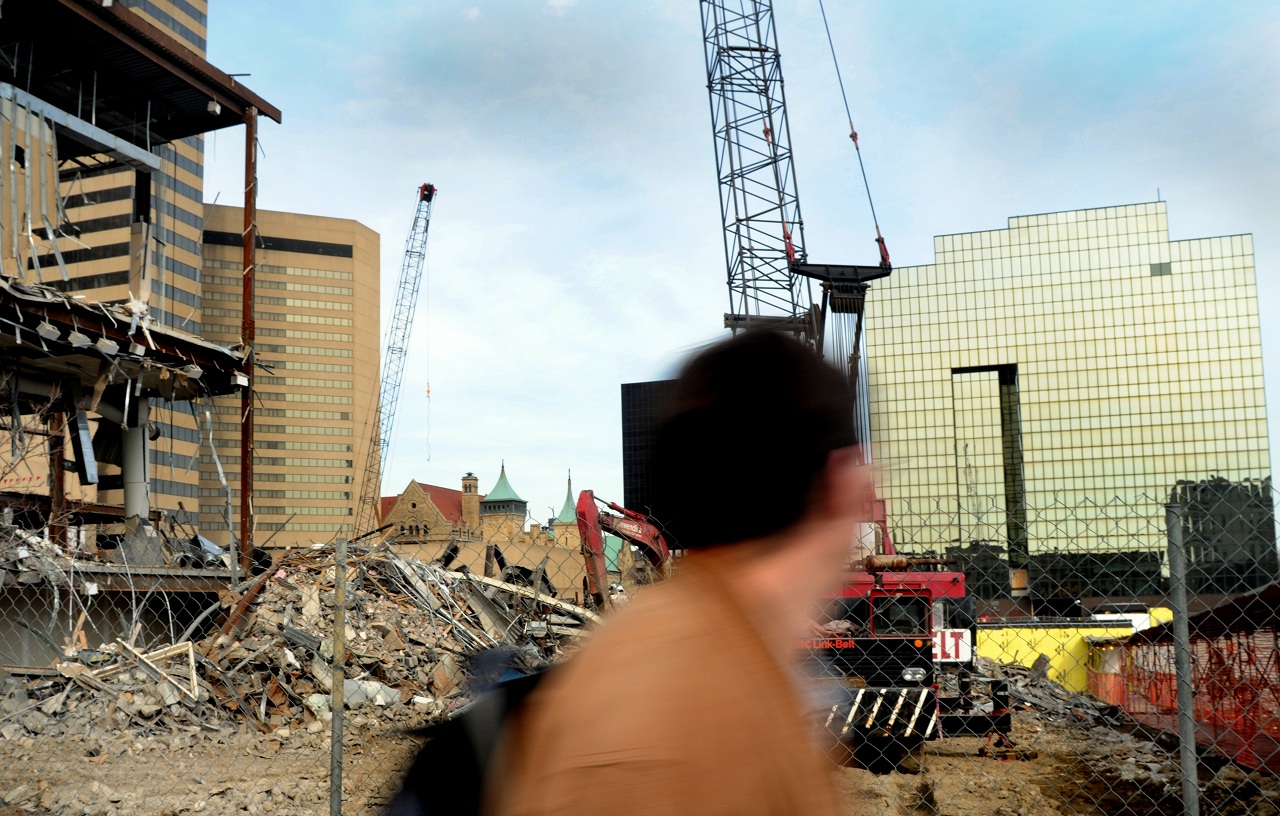Cranes Can Kill: Almost Another Statistic
I learned a hard lesson regarding the required use of spreader bars when lifting heavy angular objects with a crane: I was placed in harm’s way and witnessed the destruction of over $20,000 worth of property during a construction mishap. Fortunately, following some tense seconds, there were zero injuries and several lessons learned.
 Credit: Damian Wohrer
Credit: Damian Wohrer
I was a young construction project manager working on a utility and paving project at an industrial complex, which was supported by an in-house industrial staff. The construction contractor that won this particular contract award was somewhat notorious as a change-order specialist, and had left about $500,000 on the table. Every day was a challenge as my coworkers and I pulled what seemed like a never-ending stream of change-order requests from our office’s fax machine. This contractor was hell-bent on getting back some of the cash he knew he’d under-bid.
One day, a change order request from the contractor came in to move a pre-fabricated concrete building away from the surveyed route of a new storm-sewer line. This “portable” building was not shown on our plans and specifications. It was used to store hazardous material (waste paints and thinners) and, years before, had been placed directly over the proposed storm sewer line’s route. This type of detail is unfortunately, but understandably, often overlooked during the design phase of construction projects. During a good day in our contentious relationship with the contractor, a spirit of cooperation usually prevailed. In this instance, the contractor agreed to move this building out of the way, at no cost, as long as we (i.e., the project owner’s in-house industrial staff) would rig the building and assume any liability. I asked if the in-house staff could rig the building for the free hoist. The building was to be moved only about 30'-0". “Sure, no problem,” was the reply. If memory serves, the contractor’s crane was a 40-ton Komatsu crawler and the 12’-0" x 12-0"’ x 8’-0" pre-fabricated concrete building was made with pre-cast exposed-aggregate panels, or an overall arrangement close to that.
The appointed time to move this building was set as 1:00 p.m. on the following day. The entire operation was expected to take only about 15 minutes. I was happy that this latest glitch had been resolved; a no-cost change order had been issued, the property owner’s in-house industrial staff was graciously going to help me out, and I happily moved on to the next project management “fire” that needed to be put out that day.
In hindsight, this multi-party approach should have (and now forever will) sound-off alarms in my mind!
The next day arrived, and at 1:00 p.m. the project owner’s crew, who had agreed to rig the building for the hoist, was nowhere to be seen. The contractor’s crane operator fired-up the Komatsu. He looked at me from the operator’s station with a shoulder shrug and upturned palms, gunning the engine a few times, and blasting out diesel exhaust for good measure. Cha-ching! I could already visualize the next round of contract modifications.

I hastily went searching for the in-house crew and found them finishing up lunch. I reminded them of our project requirement, and they rushed out to help. Four (4) eye-bolts and four (4) crane leads (steel cables) needed to be attached to the bottom slab of this portable building. The hardware connection points were four threaded female-ends, each one flush-mounted in each of the floor slab’s side edges. The in-house crew quickly tracked down four appropriate crane leads and eye-bolts, and secured them into the female-ends embedded in the concrete floor slab. They placed the remaining looped-end of each crane lead onto the hook at the end of the Komatsu’s load line. (No spreader bar was used to keep the crane leads straight.) Now we were ready to move the building. I was safely (or so I thought) positioned about 100’-0" away, perpendicular to the crane boom. One of my co-workers was standing next to me.
The crane operator lifted the building a couple of feet off the ground, which was plenty for our needs. Suddenly, a crack was heard as all four crane leads appeared to simultaneously snap off their connection points at the base of the building. The building dropped a few feet and crashed loudly onto the concrete paving below.
The Komatsu’s engine was instantly throttled down to near idle as the tip of the crane boom went racing sky-ward. The crane popped a wheelie on its crawler tracks. To prevent further upward travel of the flailing crane boom, the operator aggressively swung it horizontally, right toward us. It was his only option. The project site was now eerily quiet as the load line and crane leads approached us in a silent arc, which masked their true speed and destructive potential, soon to be witnessed. We should have run, ducked, or otherwise dived out of the way. I could tell the leads were going to clear overhead and they hissed quietly as they passed above us, but now their true speed was quite evident as the eye-bolts whizzed by, continuing their journey then decelerating at the far end of their initial travel path.
Again the leads and eye-bolts approached, after a lazy U-turn, heading back from whence they came. The crane operator struggled to control the crane boom, his “wheelie” performance now over. By now, we’d stepped away from the crane leads’ trajectory. On the far end of the pre-fabricated building was a one-and-a-half story industrial building. I remember thinking the leads probably wouldn’t do too much damage as they missed us and the portable building we had tried to lift, and zeroed-in on the industrial building’s nearest concrete masonry unit (CMU) wall. After all, the leads were only thin steel cables. It was a concrete wall. Thankfully, the “headache ball” above the load line’s hook was going to clear the roofline during the pending impact.
The crane leads hit the wall and instantly blew out several windows. Some windows exploded following contact with the leads, others from the structural impact of the leads hitting the building. The impact produced an impressive cloud of dust and concrete shrapnel which sprinkled around us. Fortunately, no one was in the industrial building at the time. My jaw literally dropped, because I then fully realized what those leads would have done to my body had they hit me, which they almost did, on their initial outbound path.
It wasn’t over quite yet. As the leads peeled themselves off the wall and once again swung toward their starting point, the crane operator dumped the leads, headache ball, and load line on top of the pre-fabricated building we had originally intended to move. The building was crushed, and gradually the air filled with paint fumes.
Now it was really over and the operator killed the Komatsu engine. After a few seconds of stunned disbelief, we all walked toward the destroyed pre-fabricated building. The building’s side-wall panels had been shattered by the initial drop. The door frames were crumpled, the metal doors twisted in weird ways.
A new change-order was issued to get rid of all the debris. That one wasn’t free. I had a couple of beers that night. My bosses were good about it, and so was the project owner. They recognized that everyone was doing the best they could on a challenging project. Fortunately, the industrial building that absorbed the impact was slated to be demolished and replaced in the next year. We were all lucky that no one was hurt or killed. After that, things went surprising smoothly for the rest of the project. I think this near catastrophe bonded us all somewhat.
Lessons Learned
- If the project involves moving anything heavy that’s not routine business for everyone involved, it’s important to develop and review a planned approach with all the people involved, and ensure everyone has the proper background, tools, and/or training required for their assigned jobs.
- The value of an experienced construction equipment operator cannot be over-stated during this type of challenge (even if they work for a litigious contractor).
- Be careful about splitting up responsibilities during dangerous construction tasks, especially when rushed to meet deadlines.
- Free-swinging crane leads and load lines, even if they appear to be moving slowly, probably contain enough energy to make you look like the shredded meat in a chicken taco if they hit you.
- And most important, if you see the crane leads bent at angles and chafing the object you’re hoisting, use spreader bars.

